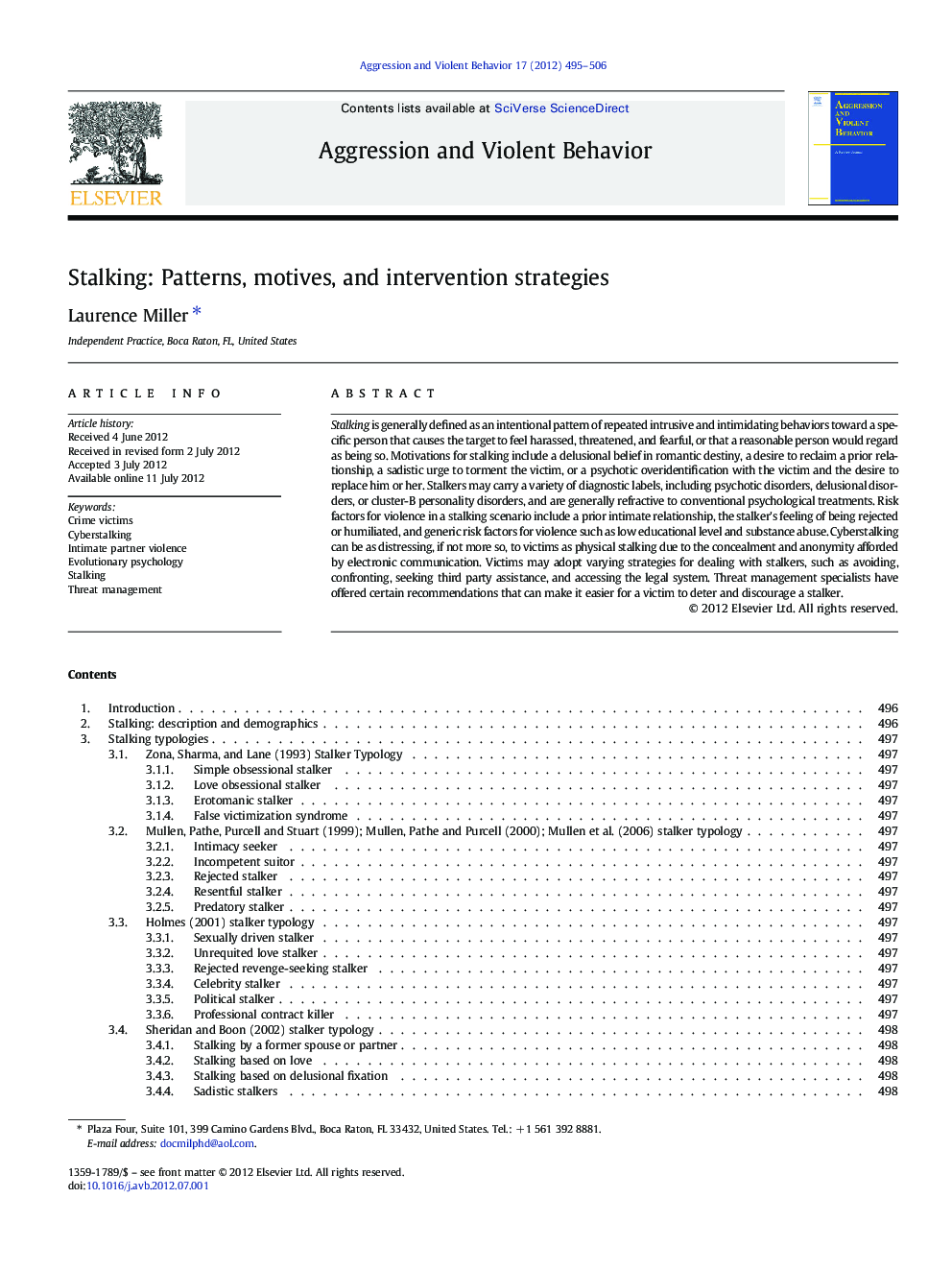| Article ID | Journal | Published Year | Pages | File Type |
|---|---|---|---|---|
| 94596 | Aggression and Violent Behavior | 2012 | 12 Pages |
Stalking is generally defined as an intentional pattern of repeated intrusive and intimidating behaviors toward a specific person that causes the target to feel harassed, threatened, and fearful, or that a reasonable person would regard as being so. Motivations for stalking include a delusional belief in romantic destiny, a desire to reclaim a prior relationship, a sadistic urge to torment the victim, or a psychotic overidentification with the victim and the desire to replace him or her. Stalkers may carry a variety of diagnostic labels, including psychotic disorders, delusional disorders, or cluster-B personality disorders, and are generally refractive to conventional psychological treatments. Risk factors for violence in a stalking scenario include a prior intimate relationship, the stalker's feeling of being rejected or humiliated, and generic risk factors for violence such as low educational level and substance abuse. Cyberstalking can be as distressing, if not more so, to victims as physical stalking due to the concealment and anonymity afforded by electronic communication. Victims may adopt varying strategies for dealing with stalkers, such as avoiding, confronting, seeking third party assistance, and accessing the legal system. Threat management specialists have offered certain recommendations that can make it easier for a victim to deter and discourage a stalker.
► Stalking is a criminalized form of natural human competition and mating behavior. ► Stalking is associated with variety of biological, psychological, cultural factors. ► Stalking may be seen in the context of a number of diagnosed mental disorders. ► Stalking is extremely refractory to conventional psychological treatment. ► There are measures that victims can take to deter stalkers and protect themselves.
